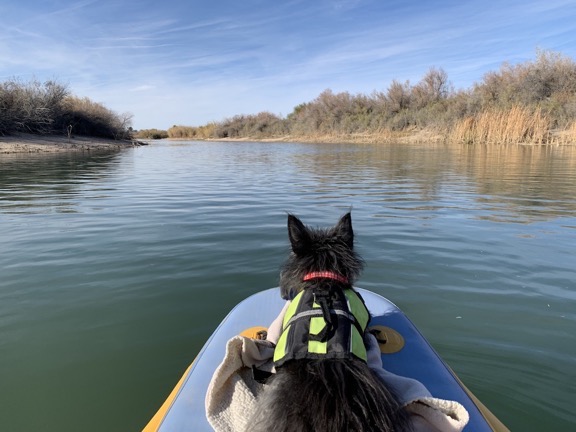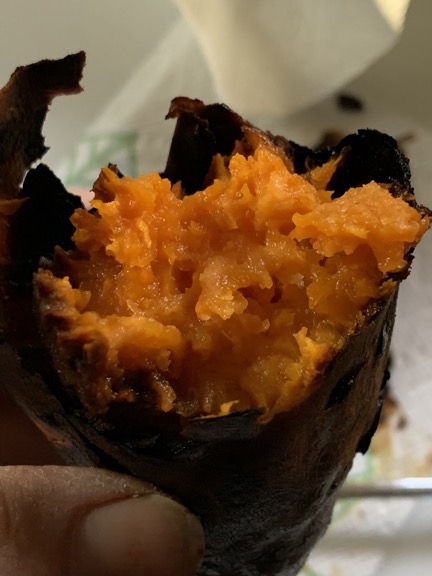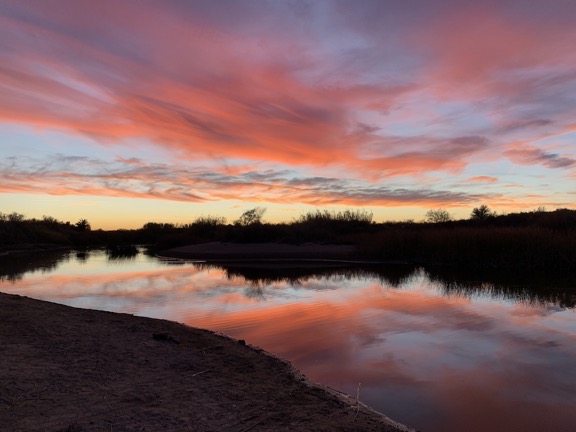We take the boats out into the backwater.

Here’s a Google Maps image of the backwaters in the area. Keep in mind that not all of the channels actually go as far as they appear to on the map due to the growth of tall reeds and bamboo along the shore. We’re at the blue dot.
One of the things I like most about our campsite this year is that it’s right on one of the longest backwater channels off the Colorado River. Last year I’d camped near this site, which has its own boat ramp, and had launched my inflatable Hobie pedal/paddle kayak into it, so I was already familiar with the waterway. I knew that I could go at least two miles north with very little current in either direction. It was perfect for a casual afternoon out in the kayak.
My friend Janet, who is sharing the same site, also brought her fishing boat along. It’s an inflatable one-seat affair — I’ll have to get a picture for a future post — designed for fishing. We both inflated our boats Tuesday afternoon and launched them, despite the chill in the air and a pretty stiff wind from the north.
Penny came along, of course, I prepped the boat by securing her fleece blanket on the bow so she’d have some traction when she stood or sat there. I also put her life jacket on so I wouldn’t have to worry about her trying to swim if she fell in. Because the water had virtually no current, I didn’t bother tethering her to the boat. She’s only fallen in once and that was a long time ago in my old kayak. I didn’t expect her to fall in today, but if she did, I knew she wouldn’t get swept away.
We headed out around 2 PM, with me pedaling and Janet rowing against the breeze. Penny soon settled down on the bow, which is when I got this photo.

Penny the Tiny Dog settled down on the bow and remained in place for most of the trip.
We were out a lot longer than I think we expected to be. Janet’s boat goes fastest when she rows backwards, but that’s not always enjoyable so she kept switching. Also, her boat seemed to have a bit more trouble battling the wind than mine did. My boat, on the other hand, rode very well yesterday, with its speed wholly dependent on how fast I pedaled. It didn’t take much to get it moving at a decent clip. But I was cold when moving into the wind and I suspect I’ll suffer for that later this week.
We got nearly to the end — Janet wanted to see a fishing spot she calls “the walk in” from the water — and then turned around and headed back. Although we were looking forward to the wind at our backs, the wind didn’t cooperate. Instead, it died down. We didn’t get back until nearly 5 PM.
More pictures to come; we’ll be here for the next two weeks and I’m sure we’ll do a lot more boating.





